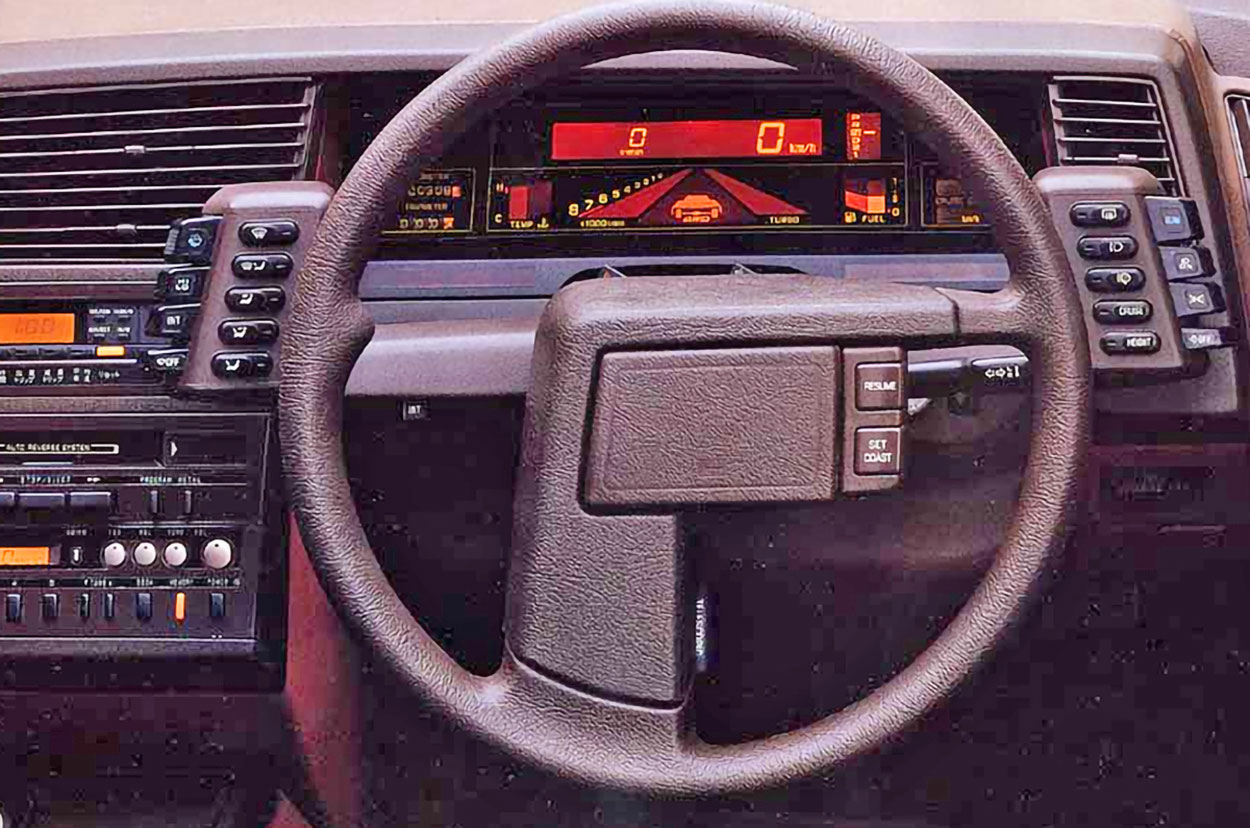Dazzling dashboards of the 70s and 80s
Slide of Video-game-like digital displays, straight-edged foam panels and clicky switches are features that can often be spotted when climbing into a four-wheeled 70s or 80s time capsule. From distinct smells to various textures, dashboards from these times can bring back memories, sometimes from decades that one’s never lived through. There are plenty to choose from, but here’s our pick of the ones that struck a chord. Slide of Alfa Romeo Montreal (1970) Rather than giving us a car with a beautiful exterior but a flop of an interior, Alfa Romeo provided the full package with the Montreal. The console was raised, the gear shifter short, and a row of six rocker switches sat bang in the centre. Two circular housings sat neatly in the dash and contained a multitude of different dials. Topping off the package: a wood-rimmed three-spoke steering wheel – stupendo! Slide of Citroen GS (1970) Why have a radio on the dashboard when you could have it between the seats? Anyway, Citroen must’ve needed space for its handbrake which pulled out of the dashboard like a cup holder. The driver’s speed was portrayed through a large glass blob in the centre while the revs were positioned to the side. In later cars, sadly this was changed in favour of a more modern system with circular dials. Slide of Buick Riviera (1971) Buick strayed from the norm and gave the third generation a dual concave dash, with chrome panels aplenty to top things off. From 1973 onwards, Buick binned the Riviera’s concave passenger panel for a straight-edged design. The metal panelling on the dash was also swapped for wood. Slide of Rolls-Royce Corniche (1971) Wood, leather, chrome and more wood is the recipe for nearly every Rolls-Royce dash, even today. The Corniche’s design is like the Silver Shadow’s but modernised slightly. A cruise control switch was fitted to the dash, as was a rev counter. Sun shining and top down, the Corniche’s chrome switchgear and walnut trim made quite the statement, and it still does. Slide of Lamborghini Countach (1974) Countach designer Marcello Gandini originally proposed an all-digital dash, but after testing this was swapped to analogue dials. The eight-dial dashboard sat high towards the windscreen and various aircraft elements remained from Gandini’s original sketch, including blocky multi-coloured warning lights. Slide of Aston Martin Lagonda Series II (1976) Its wedge design, mile-long bonnet with pop-up headlights and 17-foot (5.2 metre) body were just the start of Aston Martin’s madcap ‘70s super-saloon. Inside, the Lagonda was equipped with sensitive touch switches, which allowed the driver to change between mph and kph on the large digital screen — a world first. There was also an “essentials services only” button for night driving, which showed just the time, speed and fuel level. It was all rather ahead of its time – too ahead in fact as it was unreliable and many of its standout features were progressively junked during the car’s 14-year production run. But today’s screen-and-touch dashboard world started with this car, for better or worse. Slide of Rover SD1 (1976) There was just something special about the SD1 with a very avant-garde dash and a protruding instrument panel: six gauges and some clicky buttons by the driver’s door. Directly in front of the passenger was a centralised air vent. Whether you opted for the manual or the auto, a plaque sat beside the centre console air vents to remind you of the gear selection. This dash had quite a clever cost-cutting purpose behind it: the instrument block could easily be configured on either side of the car to facilitate production of either left-hand or right-hand drive. Slide of Isuzu Piazza (1980) From a passenger perspective, the Piazza had an average dashboard. The driver, however, required a PhD in computer science to operate the switches. Two large control panels sat at either side of the steering wheel, operating everything from the windshield wipers to the heater and fan controls. It was outlandish, but it makes our glorious list for that very reason. Slide of Audi Quattro (1980) The sharp edges and slab-sided panelling of Audi’s four-wheel drive legend continued inside the car, but what’s special was that its interior was madly humble. This was a fast car, but there were no ‘hot’ colours or eccentric switches to prove its point. Instead, the Quattro had a useable dash, and a digital display was fitted from 1984 onwards. Below the radio was a Torsen differential display, volt and oil-temp readouts. Slide of Lancia Trevi (1980) It had the aerodynamics of a stapler, with the office accessory arguably more exciting to look at than the Trevi. Lancia brought in an architect to design its ‘Swiss cheese’ dashboard which caused global controversy. Today, it makes our glorious dashboard list not only because

This is another headline indexed and brought to you by the AUTOMUNDO website.
